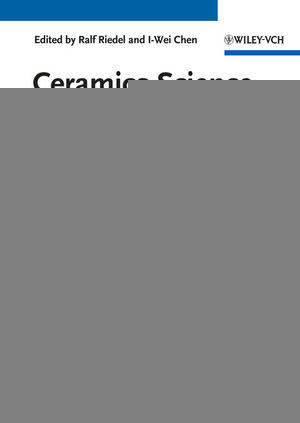

Most ebook files are in PDF format, so you can easily read them using various software such as Foxit Reader or directly on the Google Chrome browser.
Some ebook files are released by publishers in other formats such as .awz, .mobi, .epub, .fb2, etc. You may need to install specific software to read these formats on mobile/PC, such as Calibre.
Please read the tutorial at this link: https://ebookbell.com/faq
We offer FREE conversion to the popular formats you request; however, this may take some time. Therefore, right after payment, please email us, and we will try to provide the service as quickly as possible.
For some exceptional file formats or broken links (if any), please refrain from opening any disputes. Instead, email us first, and we will try to assist within a maximum of 6 hours.
EbookBell Team

4.8
64 reviewsBuilt on the solid foundations laid down by the 20-volume series Materials Science and Technology, Ceramics Science and Technology picks out this exciting material class and illuminates it from all sides.
Materials scientists, engineers, chemists, biochemists, physicists and medical researchers alike will find this work a treasure trove for a wide range of ceramics knowledge from theory and fundamentals to practical approaches and problem solutions.Content:
Chapter 1 Ceramic Oxides (pages 1–58): Dusan Galusek and Katarina Ghillanyova
Chapter 2 Nitrides (pages 59–89): Pavol Sajgalik, Zoltan Lences and Miroslav Hnatko
Chapter 3 Gallium Nitride and Oxonitrides (pages 91–130): Isabel Kinski and Paul F. McMillan
Chapter 4 Silicon Carbide? and Boron Carbide?Based Hard Materials (pages 131–227): Clemens Schmalzried and Karl A. Schwetz
Chapter 5 Complex Oxynitrides (pages 229–256): Derek P. Thompson
Chapter 6 Perovskites (pages 257–297): Vladimir Fedorov
Chapter 7 The Mn+1 AXn Phases and their Properties (pages 299–347): Michel W. Barsoum
Chapter 8 Structure–Property Relations (pages 349–378): Tatsuki Ohji
Chapter 9 Dislocations in Ceramics (pages 379–436): Terence E. Mitchell
Chapter 10 Defect Structure, Nonstoichiometry, and Nonstoichiometry Relaxation of Complex Oxides (pages 437–478): Han?Ill Yoo
Chapter 11 Interfaces and Microstructures in Materials (pages 479–528): Wook Jo and Nong?Moon Hwang
Chapter 12 Fracture of Ceramics (pages 529–575): Robert Danzer, Tanja Lube, Peter Supancic and Rajiv Damani
Chapter 13 Creep Mechanisms in Commercial Grades of Silicon Nitride (pages 577–599): Frantisek Lofaj and Sheldon M. Wiederhorn
Chapter 14 Fracture Resistance of Ceramics (pages 601–631): Mark Hoffman
Chapter 15 Superplasticity in Ceramics: Accommodation?Controlling Mechanisms Revisited (pages 633–663): Arturo Dominguez?Rodriguez and Diego Gomez?Garcia
Chapter 16 Thermal Conductivity (pages 665–696): Kiyoshi Hirao and You Zhou
Chapter 17 Electrical Conduction in Nanostructured Ceramics (pages 697–727): Harry L. Tuller, Scott J. Litzelman and George C. Whitfield
Chapter 18 Ferroelectric Properties (pages 729–790): Doru C. Lupascu and Maxim I. Morozov
Chapter 19 Magnetic Properties of Transition?Metal Oxides: From Bulk to Nano (pages 791–833): Polona Umek, Andrej Zorko and Denis Arcon